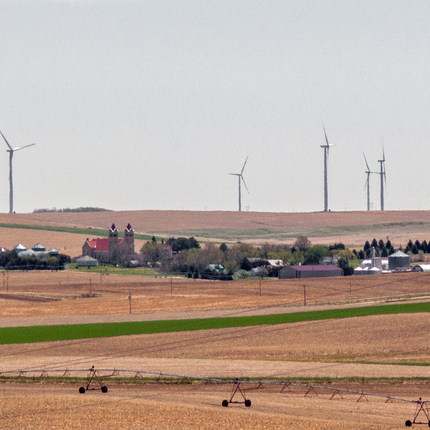Alex Delworth, policy associate, [email protected] or 402.687.2100 ext. 1016; or Rhea Landholm, communications manager, [email protected] or 402.687.2100 ext. 1025
LYONS, NE—The expansion of renewable energy generation sources like wind and solar has provided a variety of economic benefits and opportunities to rural communities. But as more renewable energy projects are proposed in rural areas, local officials find themselves tasked with creating siting and zoning standards for development, often for the first time.
The Center for Rural Affairs has added two new siting resources to its Clean Energy Siting Library, which is a database intended to assist local zoning officials and decision makers in crafting ordinances regulating renewable energy development.
“As the demand for wind and solar energy projects becomes more widespread, more county governments are feeling the pressure to create new zoning ordinances to address interest from energy developers,” according to Alex Delworth, policy associate with the Center for Rural Affairs. “A successful ordinance should seek to balance the interests of the county and community members while protecting landowner rights.”
One of these new resources is a “Clean Energy Model Ordinances” library, which provides examples of language on key topics from existing ordinances in Iowa, Minnesota, Nebraska, and South Dakota.
“In a county interview project completed by the Center, one of the greatest needs for decision makers were examples of successful ordinances,” said Delworth. “This library provides an accessible and easy tool for local decision makers to use while crafting new renewable energy ordinances.”
The Center also released its “Utility-Scale Energy Siting Recommendations,” a checklist of the most common standards found in wind and solar ordinances across the same four states.
“This document synthesizes years of research and analysis developing resources for our Clean Energy Siting Library into a short, high-level overview of the major topics found in wind and solar ordinances,” said Delworth.
The resource provides an overview of utility-scale solar and wind project zoning standards and provides state-level averages for different types of setbacks, noise limits, and shadow flicker standards.
To access and read the Center’s “Clean Energy Model Ordinances,” visit cfra.org/model-clean-energy-ordinances. For “Utility-Scale Energy Siting Recommendations,” visit cfra.org/utility-scale-energy-siting-recommendations.



